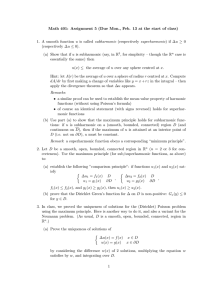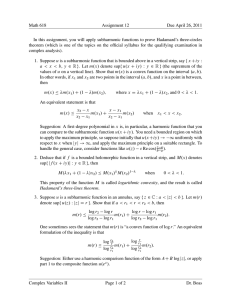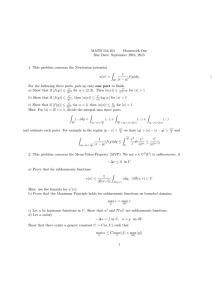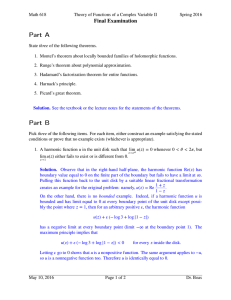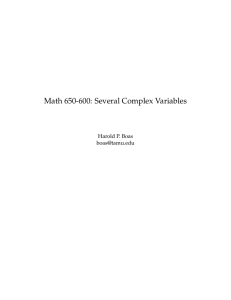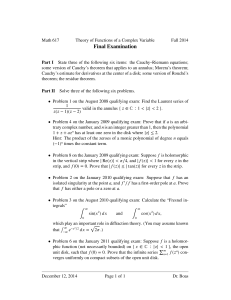Exercise on three-circles theorems
advertisement
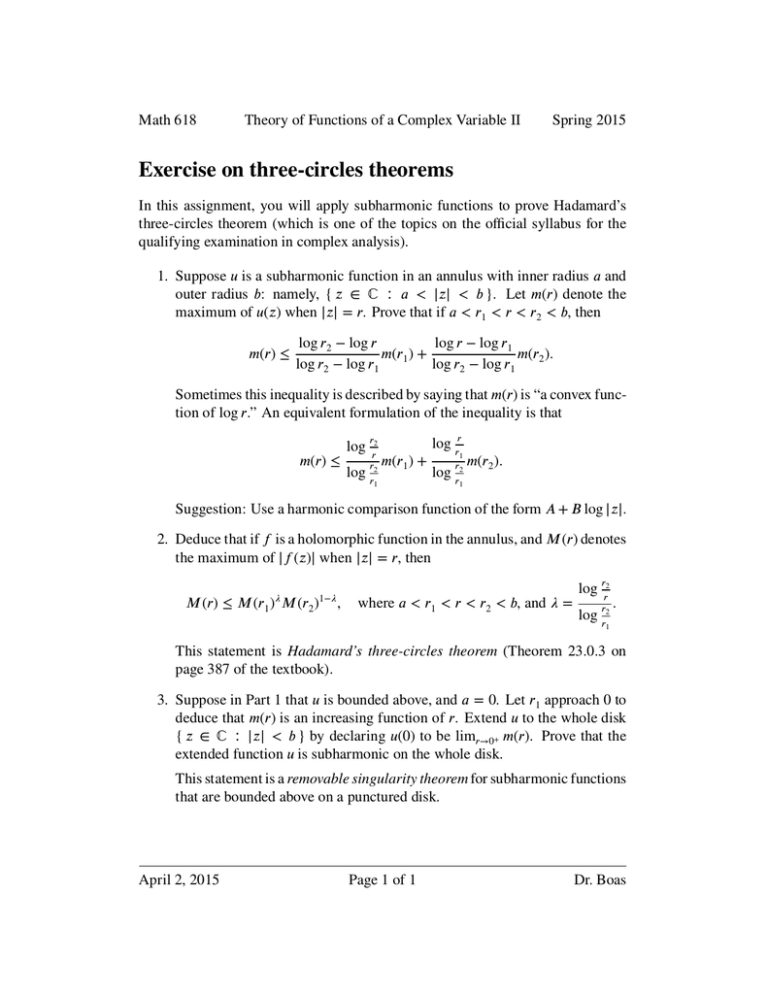
Math 618
Theory of Functions of a Complex Variable II
Spring 2015
Exercise on three-circles theorems
In this assignment, you will apply subharmonic functions to prove Hadamard’s
three-circles theorem (which is one of the topics on the official syllabus for the
qualifying examination in complex analysis).
1. Suppose 𝑢 is a subharmonic function in an annulus with inner radius 𝑎 and
outer radius 𝑏: namely, { 𝑧 ∈ ℂ ∶ 𝑎 < |𝑧| < 𝑏 }. Let 𝑚(𝑟) denote the
maximum of 𝑢(𝑧) when |𝑧| = 𝑟. Prove that if 𝑎 < 𝑟1 < 𝑟 < 𝑟2 < 𝑏, then
𝑚(𝑟) ≤
log 𝑟 − log 𝑟1
log 𝑟2 − log 𝑟
𝑚(𝑟1 ) +
𝑚(𝑟2 ).
log 𝑟2 − log 𝑟1
log 𝑟2 − log 𝑟1
Sometimes this inequality is described by saying that 𝑚(𝑟) is “a convex function of log 𝑟.” An equivalent formulation of the inequality is that
log
𝑚(𝑟) ≤
log
𝑟2
𝑟
𝑟2
𝑟1
𝑚(𝑟1 ) +
log 𝑟𝑟
1
log
𝑟2
𝑟1
𝑚(𝑟2 ).
Suggestion: Use a harmonic comparison function of the form 𝐴 + 𝐵 log |𝑧|.
2. Deduce that if 𝑓 is a holomorphic function in the annulus, and 𝑀(𝑟) denotes
the maximum of |𝑓 (𝑧)| when |𝑧| = 𝑟, then
𝜆
1−𝜆
𝑀(𝑟) ≤ 𝑀(𝑟1 ) 𝑀(𝑟2 )
log
,
where 𝑎 < 𝑟1 < 𝑟 < 𝑟2 < 𝑏, and 𝜆 =
log
𝑟2
𝑟
𝑟2
𝑟1
.
This statement is Hadamard’s three-circles theorem (Theorem 23.0.3 on
page 387 of the textbook).
3. Suppose in Part 1 that 𝑢 is bounded above, and 𝑎 = 0. Let 𝑟1 approach 0 to
deduce that 𝑚(𝑟) is an increasing function of 𝑟. Extend 𝑢 to the whole disk
{ 𝑧 ∈ ℂ ∶ |𝑧| < 𝑏 } by declaring 𝑢(0) to be lim𝑟→0+ 𝑚(𝑟). Prove that the
extended function 𝑢 is subharmonic on the whole disk.
This statement is a removable singularity theorem for subharmonic functions
that are bounded above on a punctured disk.
April 2, 2015
Page 1 of 1
Dr. Boas

